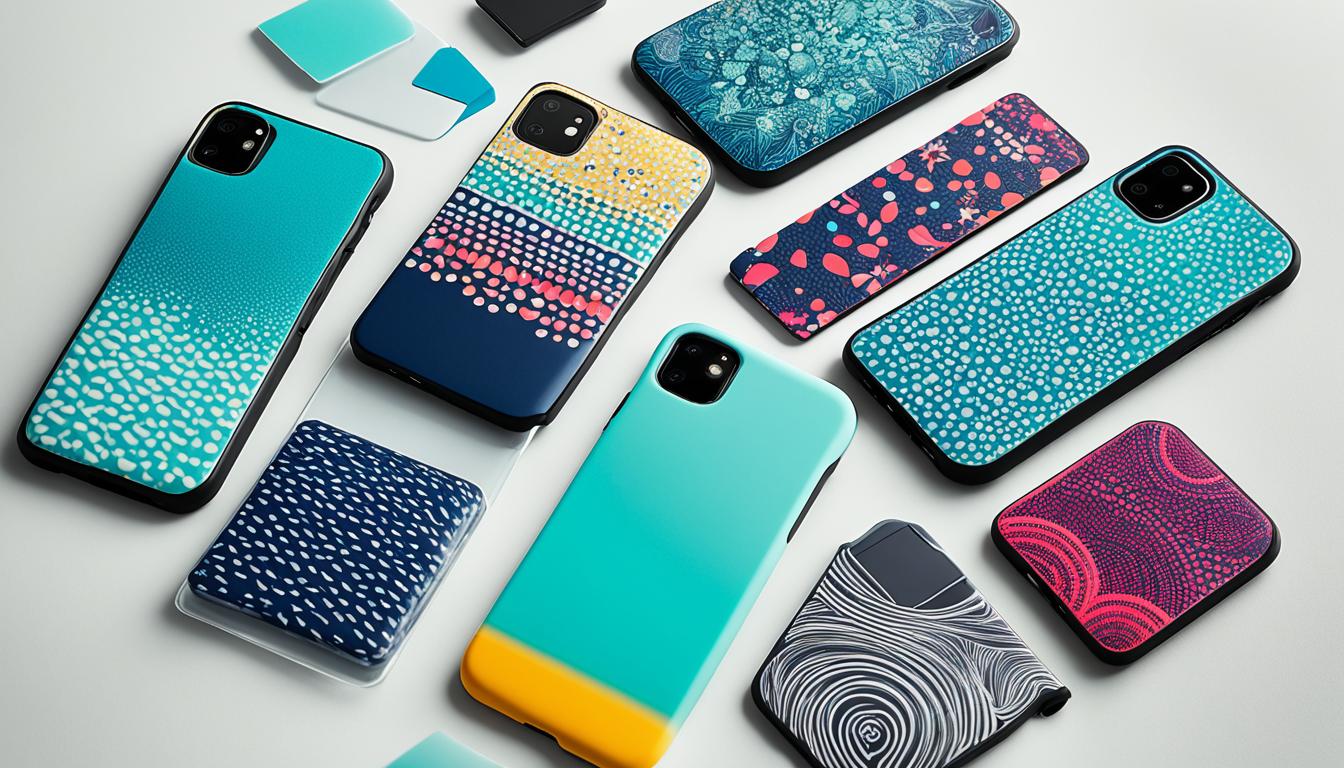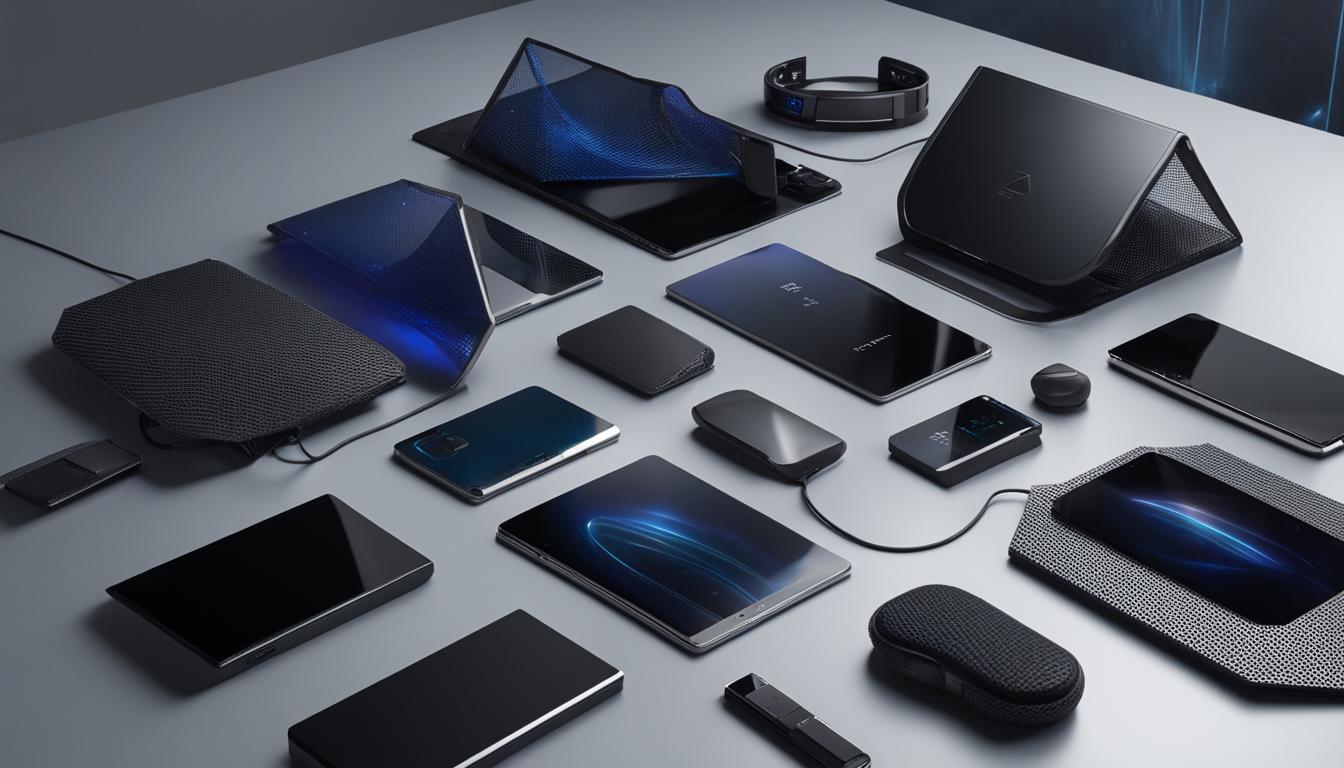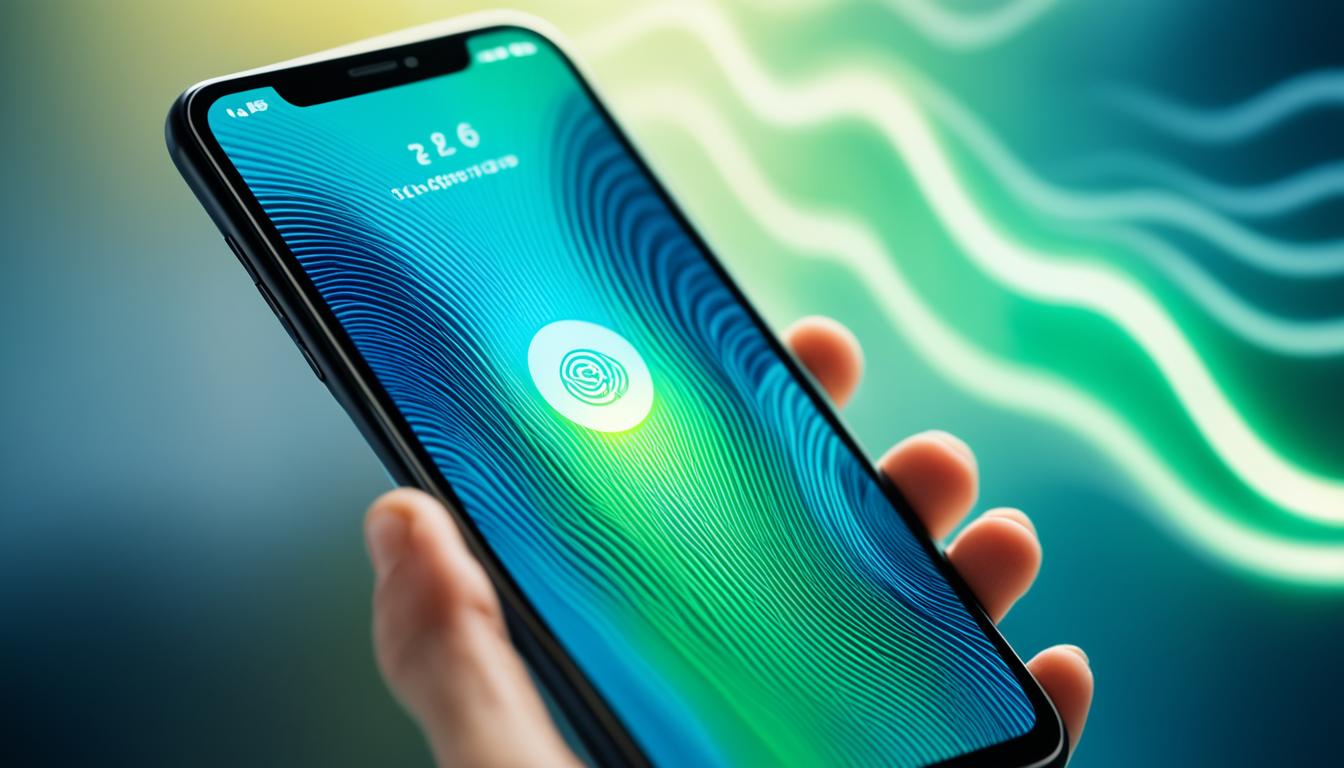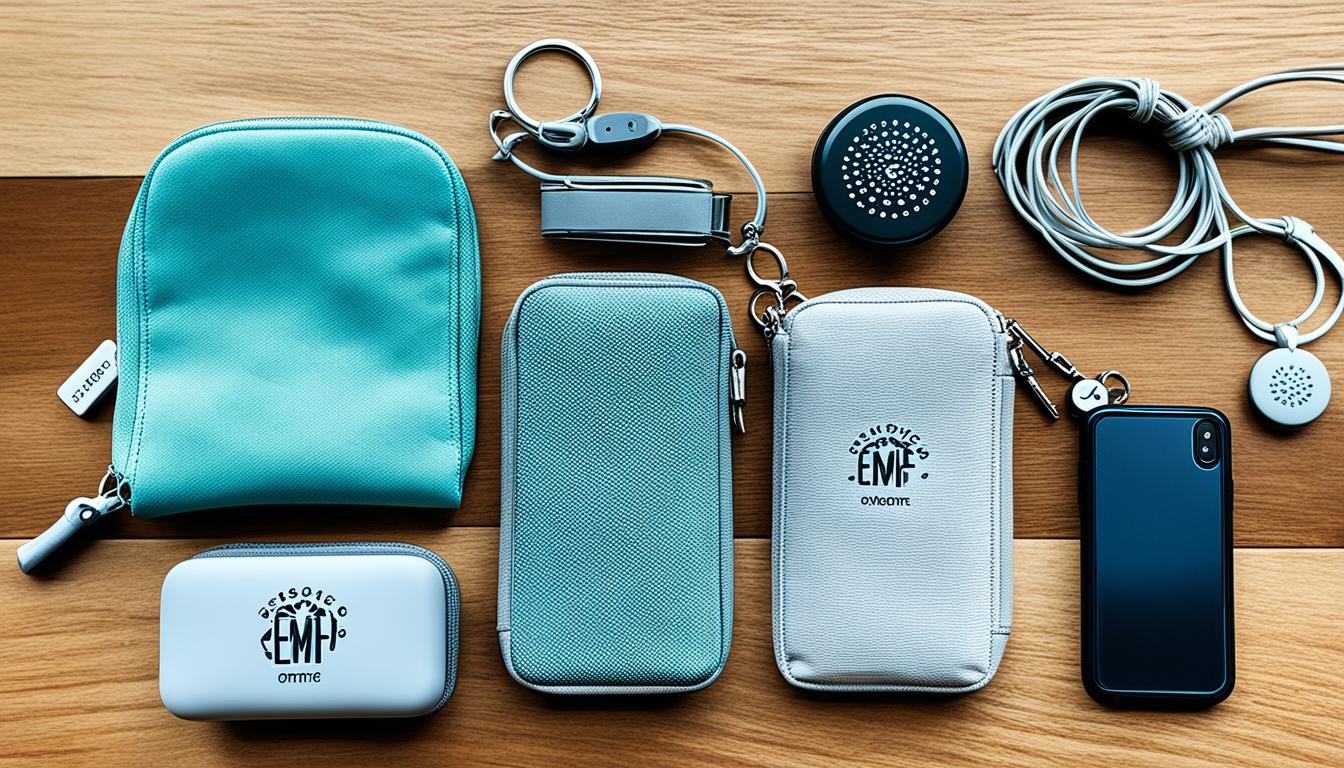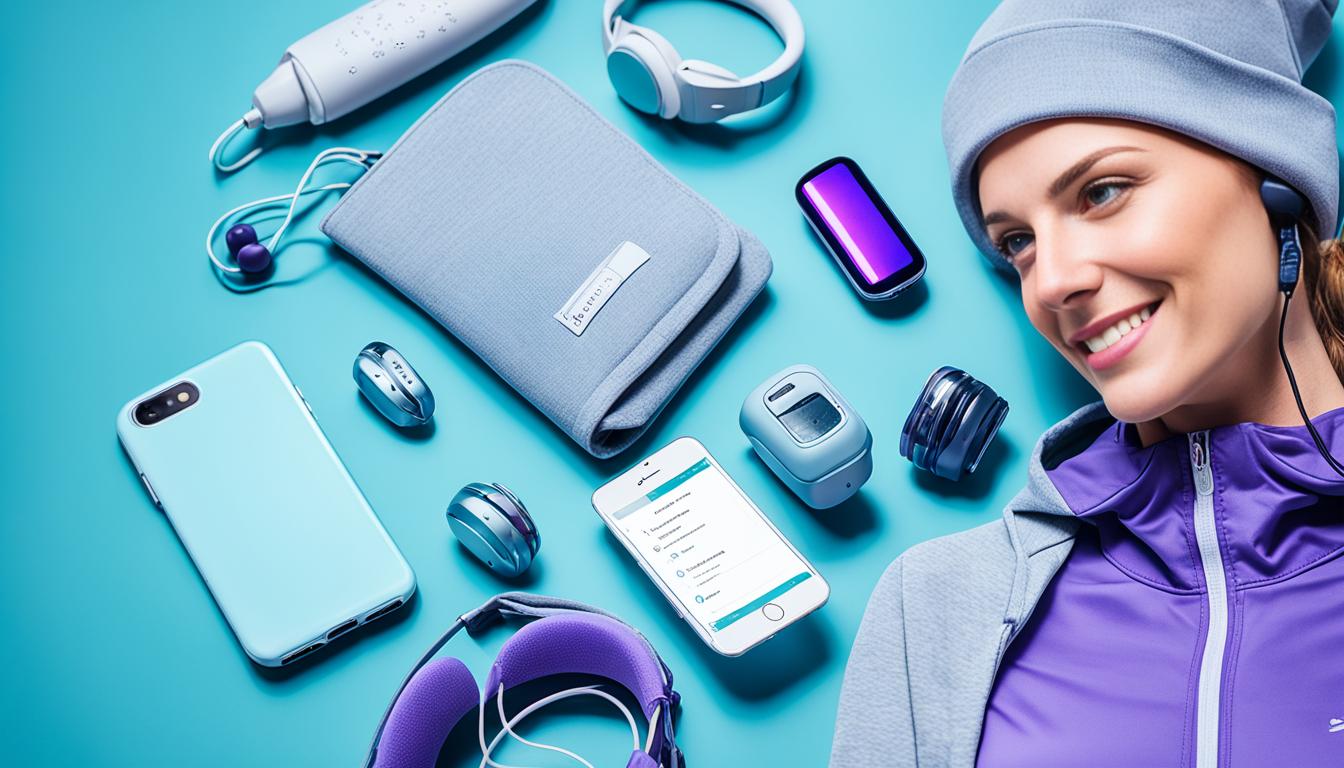Disclosure: This Post Contains Affiliate Links; We earn a commission on purchases.
There is a thriving industry that claims to reduce your exposure to cell phone radiation and electromagnetic fields (EMF) through the use of shielding products like phone cases and protective clothing. These EMF shielding accessories for mobile devices are marketed as anti-radiation phone accessories or electromagnetic shielding products that provide EMF protection cell phone cases, EMF shielding stickers, and radiation blocking phone cases for smartphone users.
However, despite the claims made by manufacturers, experts are skeptical of their effectiveness and warn against scams that claim to protect users from cell phone radiation. It is important to note that cell phones on the market are designed to operate within safety limits and additional protection may not provide any demonstrable health benefits.
Key Takeaways:
- EMF shielding accessories for mobile devices claim to reduce exposure to cell phone radiation and electromagnetic fields.
- Experts are skeptical of their effectiveness and warn against scams that claim to provide protection.
- Cell phones are designed to operate within safety limits, and additional protection may not provide health benefits.
The Potential Harm of Cell Phone Radiation and EMF
There is still ongoing debate surrounding the potential harm of cell phone radiation and electromagnetic fields (EMF). While studies have not definitively linked cell phone use to cancer, organizations like the American Cancer Society and the National Institute of Environmental Health Sciences acknowledge the need for further research in this area.
Cell phones emit radiofrequency electromagnetic fields (RF-EMF) as they communicate with cellular networks and wireless devices such as Wi-Fi and Bluetooth. The concern stems from the fact that RF-EMF has the ability to penetrate body tissues and potentially cause harm.
“The human body absorbs RF energy, and the amount of RF exposure from cell phones is relatively low. This energy is generally considered to be safe according to currently available scientific evidence,” states the American Cancer Society. However, they also highlight that some studies have reported a slight increase in the risk of certain types of brain tumors among long-term cell phone users. They emphasize the importance of continued research to understand any potential health effects.
The National Institute of Environmental Health Sciences supports the need for further research to better understand the potential risks associated with cell phone radiation. They acknowledge that while current evidence does not show a definite link between cell phone use and cancer, more studies are required to draw decisive conclusions.
Despite the ongoing debate and lack of consensus, the market for EMF shielding accessories continues to thrive. Many consumers opt for these accessories, hoping to reduce their exposure to cell phone radiation and EMF. However, it is important to note that the efficacy of these products in providing significant protection remains questionable, as well as the scientific basis underlying their claims.
Potential Risks:
- Increased risk of cancer
- Genetic damage
- Impact on sleep quality
- Effect on fertility
- Disruption of medical devices
- Potential interference with pacemakers
While the debate on the potential harm of cell phone radiation and EMF continues, it is important for individuals to stay informed about the latest research and take necessary precautions to minimize exposure. This may include using speakerphone or wired headsets, keeping the phone away from the body, and limiting usage in areas with weak signals.
With the ongoing discussion and inconclusive evidence, it’s crucial to approach the topic of cell phone radiation and EMF with scientific skepticism rather than fear. While the need for further research is evident, individuals can also focus on adopting safer phone practices and staying updated on any conclusive findings that may arise.”
Skepticism of EMF Shielding Accessories
When it comes to EMF shielding accessories, there is an ongoing debate surrounding their effectiveness and health benefits. Kenneth Foster, a bioengineering professor emeritus at the University of Pennsylvania, questions the efficacy of these protective devices, leaving consumers wondering if they are truly worth the investment.
Foster believes that the average consumer has no reliable way of determining the effectiveness of EMF shielding products. Without proper scientific evidence, consumers may be wasting their money on accessories that provide little to no reduction in exposure. It is important to consider the potential limitations before purchasing any shielding products.
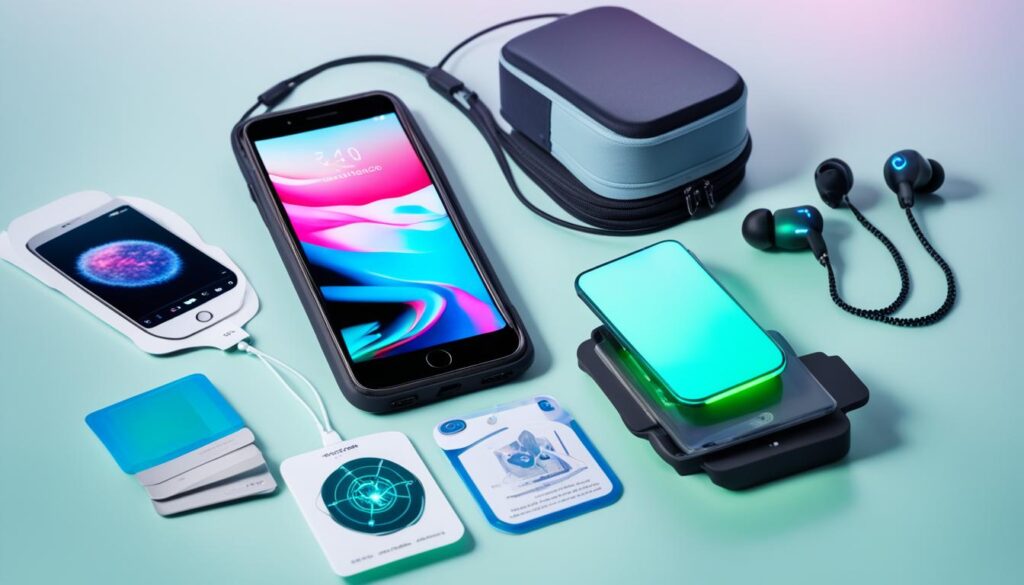
“Average consumers have no way of determining the efficacy of such devices and may be wasting their money for little reduction in exposure.” – Kenneth Foster
The Federal Trade Commission (FTC) also warns consumers about the prevalence of scams related to EMF blocking products. Some products on the market may make false claims and even have adverse effects on EMF exposure. It is crucial for consumers to be cautious and do thorough research before purchasing any EMF shielding accessories.
To make an informed decision, it is important to rely on reputable sources and scientific studies. Be wary of overhyped claims and false promises. Take the time to understand the limitations of these products and evaluate their potential effectiveness in your specific situation.
Alternative Measures for EMF Protection
While EMF shielding accessories may not provide the desired health benefits, there are alternative measures you can take to reduce your exposure to electromagnetic fields:
- Maintain a safe distance from EMF sources, such as cell phones and Wi-Fi routers.
- Limit your cell phone usage and avoid carrying it close to your body for extended periods.
- Use speakerphone, headphones, or a Bluetooth headset to minimize direct phone contact.
- Consider hard-wiring devices instead of relying solely on wireless connections.
Table: Comparing EMF Shielding Accessories
| EMF Shielding Product | Effectiveness | Health Benefits |
|---|---|---|
| EMF-blocking phone cases | Limited effectiveness | Minimal health benefits |
| Laptop shields | Inconclusive effectiveness | Minimal health benefits |
| Crystal harmonizers | No scientific evidence | No significant health benefits |
| EMF shielding clothing | Varies depending on material | Minimal health benefits |
It is essential to stay informed and prioritize your well-being when it comes to EMF protection. Instead of solely relying on shielding accessories, consider implementing these alternative measures to reduce your exposure and create a healthier environment.
The Limitations of UVC Sanitizers
UVC sanitizers have become increasingly popular during the COVID-19 pandemic as a means to eliminate pathogenic microorganisms using ultraviolet light. These sanitizing devices, often referred to as UVC cleaners, offer a convenient way to disinfect various surfaces. However, it’s important to understand the limitations of UVC light as a primary disinfectant.
While UVC light has been proven effective in laboratory settings, its real-world efficacy is still under debate. Lengthy exposure to UVC light is often required to effectively sanitize surfaces, which may not be practical in all scenarios. Additionally, improper use of UVC devices can result in health risks, particularly eye damage due to UVC exposure.
The US Food and Drug Administration (FDA) acknowledges the potential of UVC sanitizers but notes that there isn’t enough data to measure their effectiveness specifically against viruses like the novel coronavirus. As such, it’s crucial to approach UVC sanitization with caution and consider other recommended measures for hygiene and cleanliness.
“UVC sanitizers offer a convenient way to disinfect surfaces, but their effectiveness and safety require careful consideration. The US Food and Drug Administration advises additional caution and further research to fully understand the capabilities of UVC cleaning.”
To further explore the limitations of UVC sanitizers, let’s take a closer look at some key points:
1. Effectiveness and Efficacy
While UVC light has demonstrated its ability to inactivate various pathogens in controlled environments, its efficacy in real-world scenarios may vary. Factors such as distance, exposure time, and the nature of the surfaces being sanitized can affect the overall effectiveness of UVC sanitizers. It is essential to use these devices properly and according to the manufacturer’s instructions to optimize their performance.
2. Eye and Skin Safety
UVC light can pose health risks, particularly to the eyes and skin, if not used correctly. Prolonged exposure to UVC light can lead to eye damage, including corneal burns and cataracts. It is crucial to avoid direct exposure to UVC light and ensure that proper safety measures are followed when using UVC sanitizers.
3. Lack of Data on Virus Inactivation
While UVC light has been proven effective in germicidal applications, its effectiveness against specific viruses, including the novel coronavirus, requires further research. The US Food and Drug Administration highlights the need for additional data to measure the efficacy of UVC sanitization in combating viruses like COVID-19. As such, UVC sanitizers should not be solely relied upon as the primary means of virus prevention.
Although UVC sanitizers can be a valuable tool in sanitizing surfaces, it’s important to be aware of their limitations. To ensure comprehensive cleanliness and hygiene, it’s recommended to incorporate other effective measures such as regular handwashing, the use of disinfectants, and following guidelines provided by health authorities.
| Pros | Cons |
|---|---|
| Convenient and quick disinfection method | Effectiveness can vary depending on distance and exposure time |
| Eliminates pathogenic microorganisms on surfaces | Prolonged UVC exposure can pose eye and skin health risks |
| Does not require the use of chemicals | Limited data on the effectiveness against specific viruses like COVID-19 |
The Debate Surrounding Antimicrobial Materials
Antimicrobial materials have gained popularity for their potential to reduce exposure to bacteria and lower the risk of infection. These materials, often formulated with antimicrobial agents such as nanostructured coatings or silver, are designed to inhibit the growth and spread of microorganisms on various surfaces.
While antimicrobial materials have shown promise in preventing bacterial infections, their effectiveness in protecting against viruses, such as COVID-19, remains uncertain. It’s important to note that these materials primarily target bacteria and may not provide the same level of protection against viral particles. The debate continues as to whether passive antimicrobial materials offer any significant defense against viral transmission.
While antimicrobial materials may not be a foolproof solution for virus protection, they can still play a role in promoting proper hygiene practices. By reducing bacterial contamination on surfaces, antimicrobial materials indirectly contribute to overall hygiene standards, complementing essential measures like regular handwashing, disinfection, and proper sanitation.
It’s crucial to understand that antimicrobial materials alone cannot replace fundamental preventive measures, such as wearing masks, practicing social distancing, and getting vaccinated. These proven strategies play a vital role in minimizing the risk of virus transmission and should be prioritized over relying solely on antimicrobial materials.
“While antimicrobial materials offer potential benefits in reducing bacterial exposure, they should not be seen as a substitute for proper hygiene practices and essential preventive actions.”
It’s essential to practice proper hygiene, including regular handwashing with soap and water, using hand sanitizers when soap is not available, and avoiding touching the face to prevent the spread of viruses. Additionally, wearing masks, following social distancing guidelines, and getting vaccinated are crucial steps in protecting oneself and others from the risk of infection.

In conclusion, while antimicrobial materials can contribute to reducing bacterial contamination, their effectiveness against viral transmission, such as COVID-19, remains uncertain. To minimize the risk of infection, it’s vital to prioritize proven preventive measures like proper hygiene, wearing masks, practicing social distancing, and getting vaccinated.
The Reality of RFID Skimming and Protection
RFID skimming, a criminal activity in which perpetrators use RFID readers to steal payment information, has raised concerns about contactless payments and the need for RFID-blocking products. However, the actual instances of RFID skimming in the real world are rare, leading to questions about the necessity of these products and the effectiveness of their protection.
Most credit cards have limited information transmitted via RFID, making it challenging for criminals to engage in credit card fraud through RFID skimming. The risk associated with RFID skimming is further limited by the availability of cheaply acquired credit card information on the dark web, making it a less appealing option for criminals.
While RFID-blocking products may offer a sense of security, it is essential to understand that their effectiveness remains unproven, and the need for them is questionable. Instances of actual RFID skimming are limited, and credit card fraud through this method is uncommon, providing a false sense of security to users.
To summarize, RFID skimming is a criminal activity that has led to the development of RFID-blocking products. However, the limited risk and rarity of actual RFID skimming incidents challenge the need for these products. Users should exercise caution and consider the actual threat before investing in RFID-blocking products, understanding that their effectiveness may be uncertain.
The Disappointing Results of EMF Protection Products
A variety of EMF protection products, ranging from phone cases to harmonizers, have flooded the market with promises of safeguarding users from the potential risks of EMF exposure. However, a closer examination reveals that many of these products fail to deliver on their claims, leaving consumers disappointed and skeptical.
Scientific research and independent testing have consistently shown that a significant number of EMF protection products do not provide adequate protection or, in some cases, can even increase EMF exposure. These products often rely on false claims and lack substantial evidence to support their effectiveness.
“While the concept of EMF protection products may sound reassuring, the reality is that many of these products simply do not live up to their promises. Consumers should be cautious of exaggerated claims and instead focus on evidence-based solutions.”
Organizations like the Federal Communications Commission (FCC) also caution against falling victim to scams and highlight the lack of scientific proof for the efficacy of EMF protection products. Rather than relying on questionable solutions, it is essential to explore alternative measures that have a stronger foundation in scientific research.
One alternative is to hard-wire electronic devices whenever possible, reducing the need for wireless connections and minimizing exposure to EMF. Additionally, maintaining a safe distance from EMF sources, such as wireless routers and power lines, can further mitigate potential risks.
It is important to approach EMF protection products with skepticism and exercise caution. Instead of investing in products that may not deliver their promised benefits, it is advisable to focus on scientifically validated methods of minimizing EMF exposure.
Efficacy of EMF Protection Products
| Product | Efficacy |
|---|---|
| EMF-Blocking Phone Cases | Minimal to no effectiveness in reducing EMF exposure |
| Laptop Shields | Limited evidence of reducing EMF exposure |
| Crystal Harmonizers | No scientific evidence supporting their claimed benefits |
| EMF Shielding Clothing | Cannot fully block or reduce EMF exposure |
Image: EMF analysis conducted by experts to determine the effectiveness of EMF protection products.
As this table demonstrates, EMF protection products often fall short in delivering the expected results. Consumers should be cautious and prioritize evidence-based solutions when seeking protection against EMF exposure.
Conclusion
EMF shielding accessories for mobile devices have gained popularity as individuals seek protection from cell phone radiation and EMF. However, the efficacy of these accessories remains uncertain, and there are potential risks associated with their use. It is important to consider alternative measures to minimize EMF exposure and prioritize proper phone use.
While EMF shielding accessories may provide a sense of protection, skepticism exists among experts regarding their ability to effectively reduce exposure. It is crucial to rely on scientific evidence and independent testing to determine the efficacy of these products before investing in them.
Instead of solely relying on shielding accessories, alternative measures can be adopted to reduce EMF exposure. Maintaining distance from EMF sources, such as keeping the phone away from the body in a bag instead of a pocket, can help minimize exposure. Additionally, using a Bluetooth speaker or headset instead of holding the phone close to the head can further reduce radiation exposure.
Practicing proper hygiene, such as regularly washing hands and keeping the phone clean, is also important to minimize potential risks. By incorporating these alternative measures and prioritizing proper phone use, individuals can take proactive steps towards minimizing EMF exposure without solely relying on EMF shielding accessories.
Source Links
- https://www.wired.com/story/uvc-sanitizers-antimicrobial-cell-phone-radiation-rfid-blocker-tech-scaremongering/
- https://www.shieldyourbody.com/emf-blocking-phone-case/
- https://techwellness.com/blogs/expertise/do-emf-protection-shields-devices-and-clothes-work-to-reduce-radiation

Subscribe to Our Newsletter

